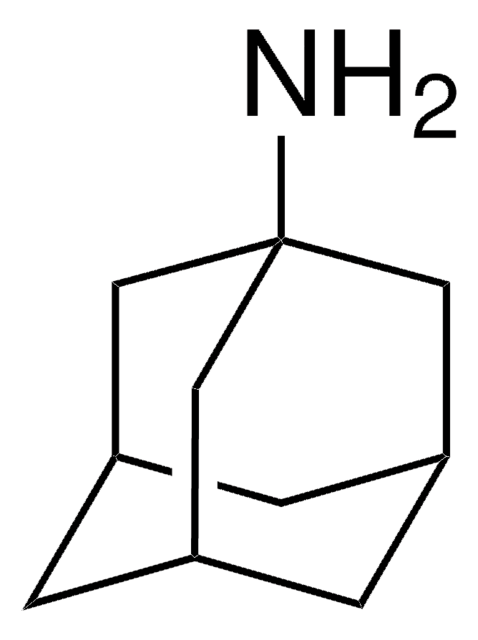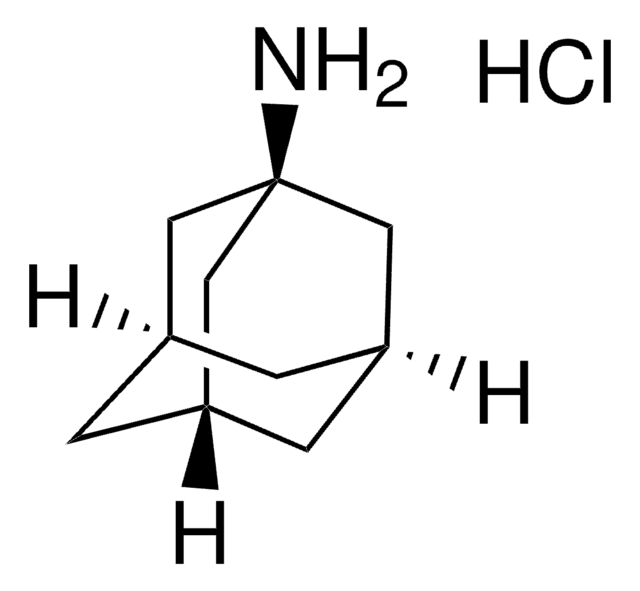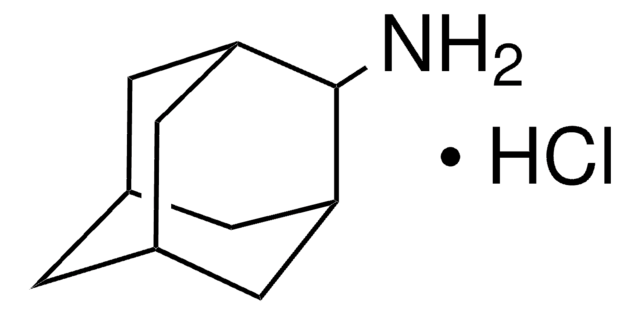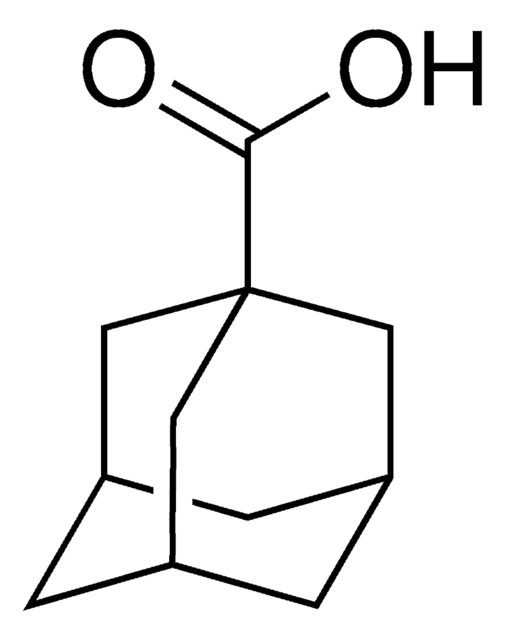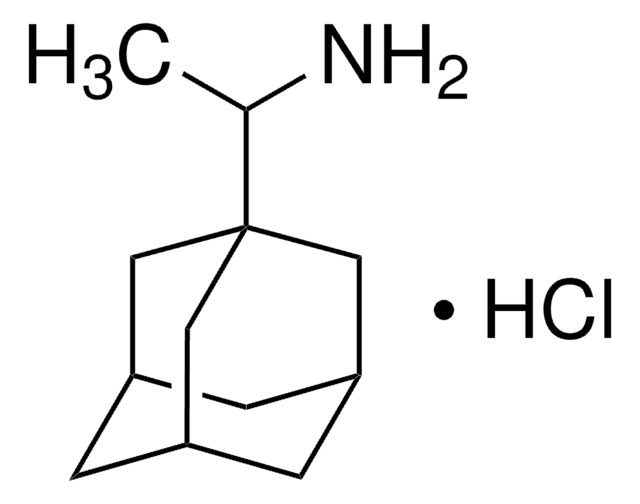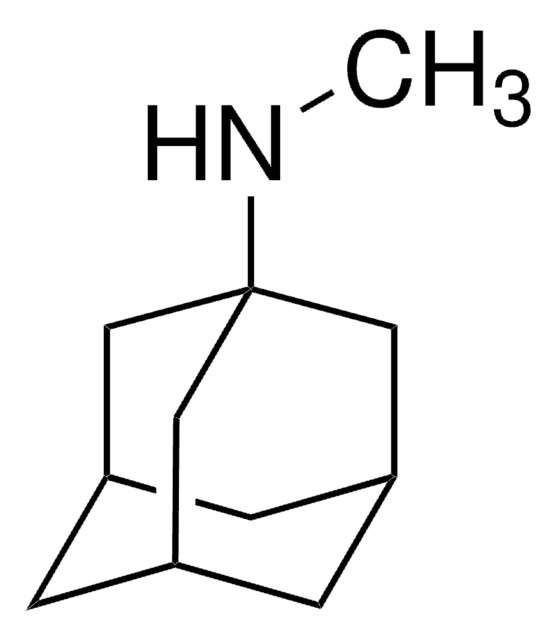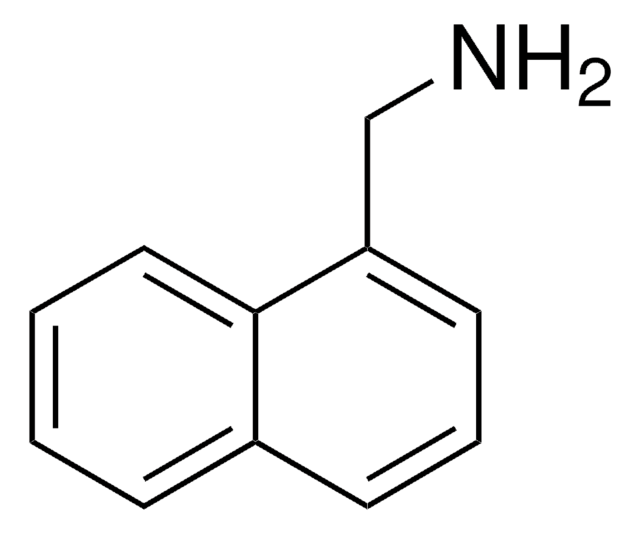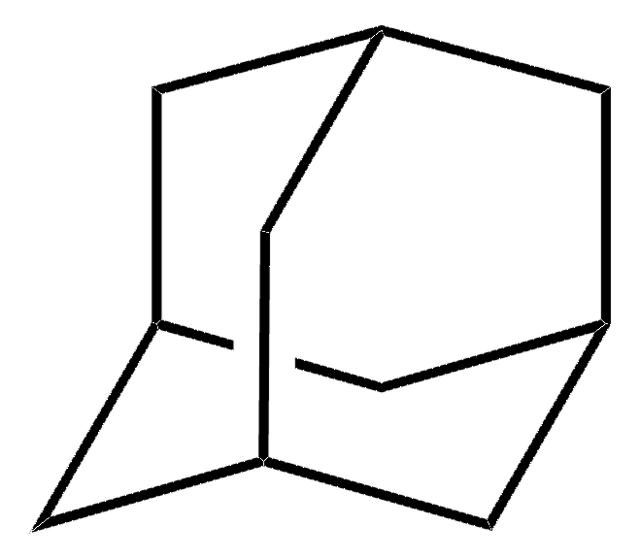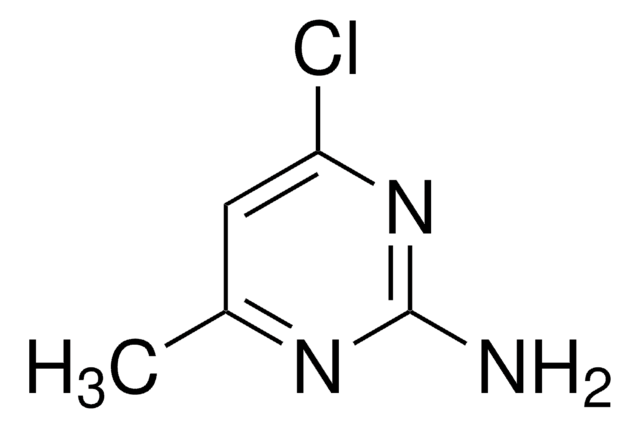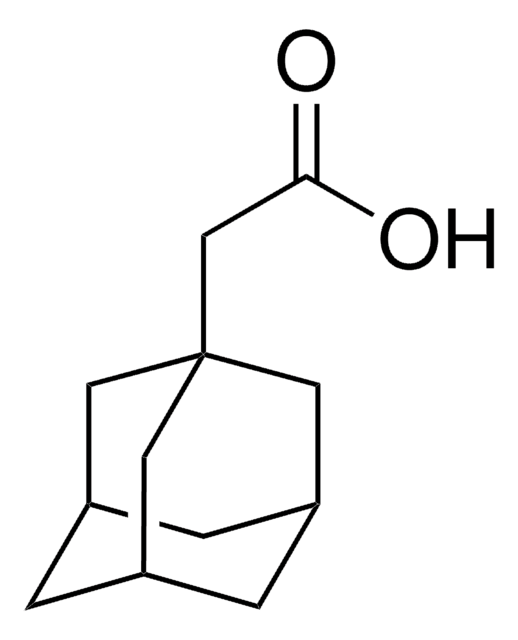Wichtige Dokumente
180378
1-Adamantanmethylamin
98%
Synonym(e):
1-(Aminomethyl)-adamantan
About This Item
Empfohlene Produkte
Qualitätsniveau
Assay
98%
Form
liquid
Brechungsindex
n20/D 1.5137 (lit.)
bp
83-85 °C/0.3 mmHg (lit.)
Dichte
0.933 g/mL at 25 °C (lit.)
Funktionelle Gruppe
amine
SMILES String
NCC12C[C@H]3C[C@H](C[C@H](C3)C1)C2
InChI
1S/C11H19N/c12-7-11-4-8-1-9(5-11)3-10(2-8)6-11/h8-10H,1-7,12H2/t8-,9+,10-,11-
InChIKey
XSOHXMFFSKTSIT-BIBSGERRSA-N
Angaben zum Gen
human ... GRIN2A(2903)
Verwandte Kategorien
Allgemeine Beschreibung
Signalwort
Danger
H-Sätze
Gefahreneinstufungen
Eye Dam. 1 - Skin Corr. 1B
Lagerklassenschlüssel
8A - Combustible corrosive hazardous materials
WGK
WGK 3
Flammpunkt (°F)
197.6 °F - closed cup
Flammpunkt (°C)
92 °C - closed cup
Hier finden Sie alle aktuellen Versionen:
Besitzen Sie dieses Produkt bereits?
In der Dokumentenbibliothek finden Sie die Dokumentation zu den Produkten, die Sie kürzlich erworben haben.
Kunden haben sich ebenfalls angesehen
Unser Team von Wissenschaftlern verfügt über Erfahrung in allen Forschungsbereichen einschließlich Life Science, Materialwissenschaften, chemischer Synthese, Chromatographie, Analytik und vielen mehr..
Setzen Sie sich mit dem technischen Dienst in Verbindung.